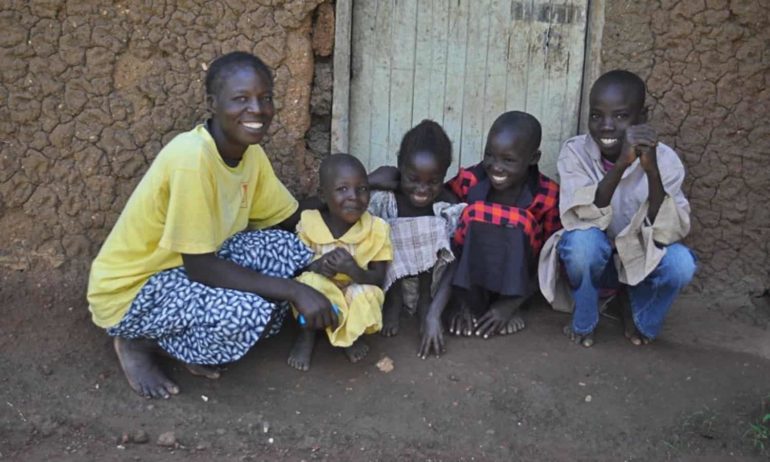Esther Nyongesa walks slowly, leading her foreign visitors through the rows of maize on her farm in rural western Kenya. For the last few years, she explains, her harvest has been good. Her six children have been able to get all the food they need, and there is never any problem paying the school fees on time. She gestures toward a new plot of land that she’s leased for planting this season.
Life is good. But it wasn’t always like this.
She stops walking before answering the next question. Just a few years ago, Esther’s life was very different—much more like the life many African smallholder farmers face. She worked hard all year. But whatever she planted, it was never enough to feed her family. During the leanest time of the year—known in Kenya as the “hunger season”—Esther and her children would stretch their resources by skipping meals.
With the business model that Esther—and the millions of smallholder farmers like her—are using, it’s no wonder that hunger is the norm. Any entrepreneur will tell you that businesses can’t be successful without sufficient investment, solid supply chains, modern production methods, and adequate markets. For smallholder farmers, these things are largely out of reach.
Take Esther’s situation. Every year she would work odd jobs to buy seeds and fertilizer, but by the time she had enough money, planting time had already come and gone. When she did buy, she had to accept the risk of being sold bad quality (or even fake) seeds and fertilizer. The only farming techniques she knew were old and ineffective. And after the harvest, she would sell her maize for only 40 Kenyan shillings per 2kg tin—a fraction of the 120 shillings she could have gotten if she’d been able to store her crops until prices reached their seasonal peak ahead of next season’s harvest.
Stuck in a failed business model that was leaving her family hungry year after year, Esther decided to take action. In 2010, she decided to join One Acre Fund.
For about US$80, One Acre Fund’s package is designed to address each of the shortcomings of the traditional smallholder business model. What Esther got when she signed up was: 1) high quality seeds and fertilizer delivered to her farm just in time for planting season; 2) financing, such that the cost of the program could be paid piece-by-piece throughout the agricultural season; 3) training on modern agricultural methods and business practices; and 4) support on crop storage, and information on how to get the best prices at market.
Before joining One Acre Fund in 2010, the most maize she ever harvested from her half acre of land was two bags. That first year after joining the program she harvested 12 bags.
Thinking back on the difference between 2009 and 2010, Esther speaks of a heavy burden being lifted. “That year I was able to harvest enough food to feed my family,” she says, “and I could finally breathe.”
Besides food, she says, the extra money has allowed her to invest in her business and in her children’s futures. In 2012 she bought a cow and named it Mkulima, which means “farmer” in Swahili. It produces three liters of milk in the morning, which she takes directly to her children’s school to pay their school fees, and two liters in the evening, which they consume. Last year Mkulima gave birth to a calf. She has also started leasing more land, and next year she’ll plant on 1.5 acres instead of just half of one. One of her daughters is entering her final year of high school this year, and she’s already got a plan to pay for it.
Esther turns toward her guests and smiles. “Looking at how good my life is right now, I only wish I had been able to kickstart my business like this ten years ago. Who knows what sort of great things I could have achieved by now?” It’s an exciting question.
Esther’s remarkable story is all the more remarkable because it is not unique. Smallholder farmers represent a vast and largely unmet global demand for business services. Serving this demand means giving farmers the tools to help themselves—to turn around their businesses and to feed their communities.
According to the UN, world population is on track to reach 9.6 billion by 2050. Feeding the world is a colossal challenge, and food aid isn’t going to cut it. If we can unlock the potential of smallholder farmers by servicing their business needs, we’ll be well on our way to global food security.















